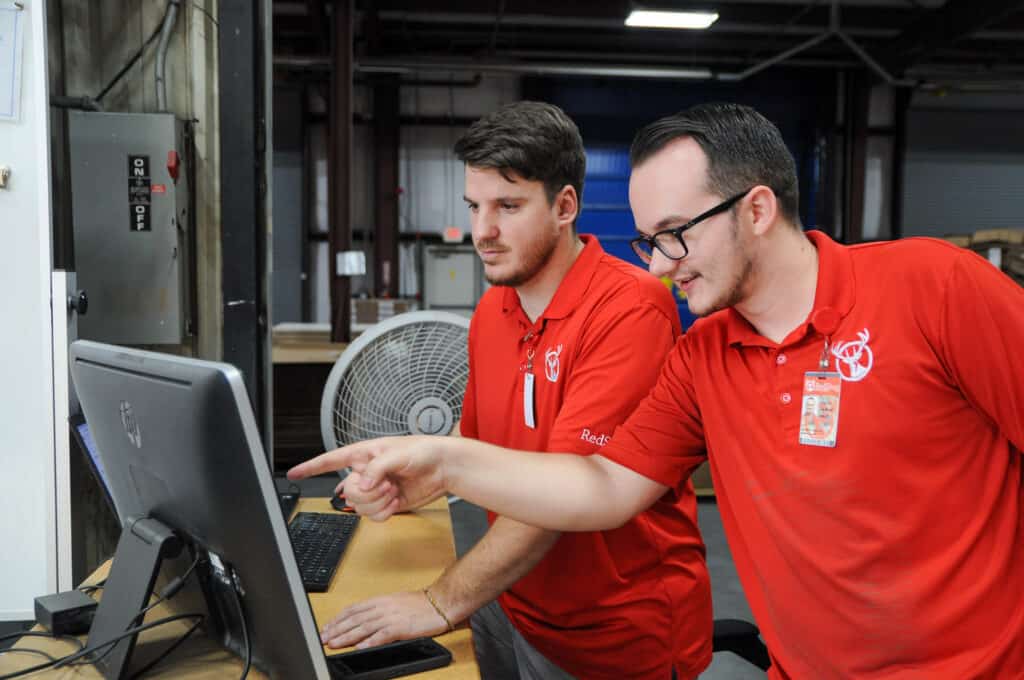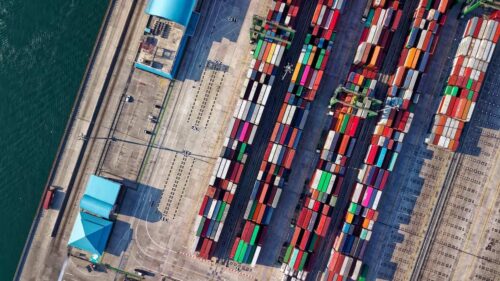At this point, we know that the supply chain realm isn’t returning to how it was in 2019. “Covid-19, Port Congestion, and Equipment and Driver shortages have all culminated in delays at each point of the supply chain,” Lorrie Watts, Director of Logistics at Red Stag Fulfillment, says. Even though our industry has faced unpredictable times, we do see commonalities and can somewhat prepare for the future.
This past year was unlike any other year. With the knowledge we gained from 2020, we were able to go into 2021 with extra tools in our arsenal. But, it still had its learning curves. These are the things we, here at Red Stag Fulfillment, learned from the supply chain backlog.
COVID-19 and the supply chain backlog
Let’s face it. COVID-19 has been here for a couple of years now, and it doesn’t seem to be going anywhere. Because of this, our way of life has changed. From the increase of online purchasing to constant staffing issues, the supply chain industry had to make adjustments. With labor decreasing and orders increasing, supply chains continue to readjust their timelines to get orders out.

Lesson Learned #1: Communication is key
Communicating with your customers and clients is essential to keep your business running smoothly. Marketing and communications are your best line of defense against upset customers around shipping issues. Sending email updates and adding banners to websites are some tactics to communicate shipping issues to your customers.
Port congestion
The Great Port Congestion of 2021 was something that we didn’t want to see coming. As ports continued to pile up with cargo ships that held most of the country’s imported goods, it created delays for almost every shipping provider. In 2021, the waiting time for vessels at ports skyrocketed, with 10% of the world’s container capacity idling. As mentioned before, communication is tied to making sure clients and customers remain happy. However, analytics play the biggest role in maintaining a smooth workflow for 3PLs and eCommerce businesses.
Lesson Learned #2: Always have a backup plan
We can’t fix the port congestion and shipping delays, but we can create backup plans that can dampen the blow of delay times. By analyzing shipping data, you have the opportunity to see where your products are being stopped, learn which points in the shipping process have the most pain, and determine if the delays will severely affect your company’s profits.
From here, you can create backup plans. If the port you access your goods through is severely backed up, you could look into switching to a different port to decrease delays. You also have the opportunity to look at regional carriers to create partnerships. By doing this, your eCommerce has the ability to diversify your carriers to take the burden off of the national carriers that you use. “Focus on options that will suit your business and your needs, not just what you’re used to,” says Watts.
Shortages in supply chain
From computer chips to potato chips, 2021 was full of shortages that ultimately affected everyone. However, it didn’t just stop at basic goods. We saw shortages in trucking equipment and truck drivers. And as of right now, it doesn’t seem that it will slow down anytime soon.
Trucking equipment shortages
With automakers overwhelmed and behind on making Class 8 trucks, order fulfillment follows suit. Plus, the influx of orders presents its own challenges. Distribution centers aren’t receiving the appropriate amount of trailers they need to complete orders.
Truck driver shortages
The truck driver shortage has been an ongoing conversation for a few years now. Things like work/life balance, pay, and COVID-19 are just a few reasons for the trucking shortage. For an eCommerce business, it can be hard to see how you might be able to overcome this issue.
Lesson Learned #3: Change your planning process.
“With on-time delivery being a rarity, companies must add extra days into their planning process,” Watts says. By adjusting your shipping times to reflect the delays your company already faces, you can keep the promises you’ve made with your customers. Providing exact delivery estimates can give the customer a little peace of mind.

But, you don’t have to stop at the shopping cart. As an eCommerce business, you have the ability to shift your schedule to avoid waiting for the delayed parts and use this time to focus on other production opportunities. Flexibility is how companies can simultaneously respond to supply chain issues happening in multiple areas. “Maintaining flexibility and looking for unconventional ways of getting product to the door will be necessary to maintain a smooth flow of inventory,” Watt says.
As we continue into another year of unpredictable times, it’s important to partner with companies that can provide services that can benefit your eCommerce company. At Red Stag Fulfillment, we are actively looking for ways to improve and provide the best services for our clients. From expanding our warehouse locations, like our upcoming Sweetwater facility, to utilizing major eCommerce integrations, we want our clients to succeed.
Are you looking for a new 3PL provider? Why not take our questionnaire to see if Red Stag is a good fit for your business? We’re here to help!











